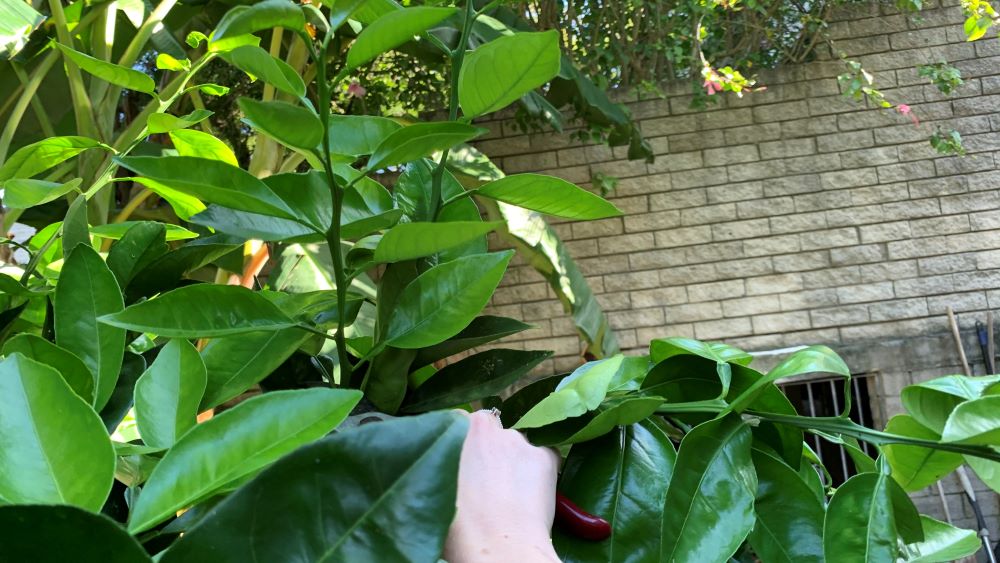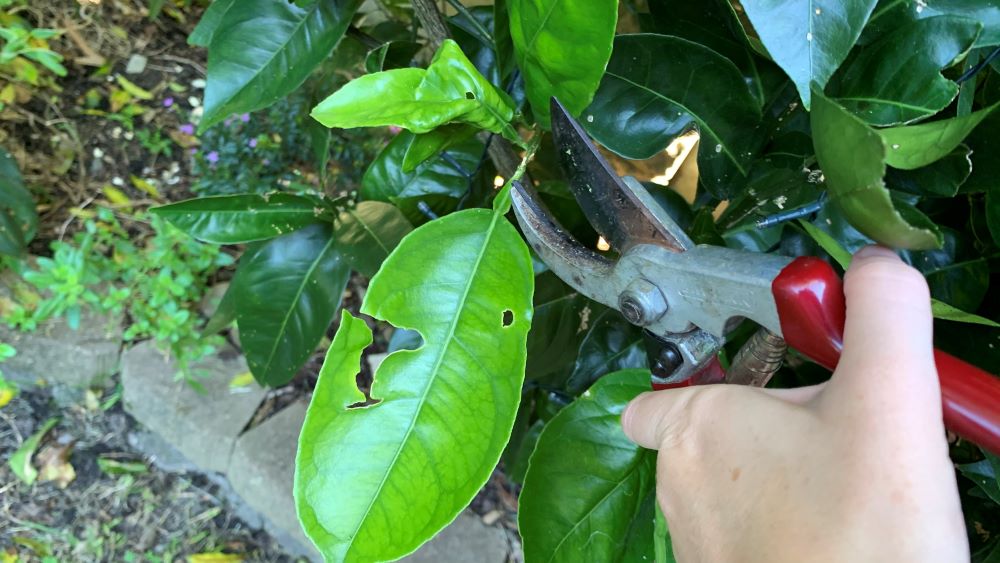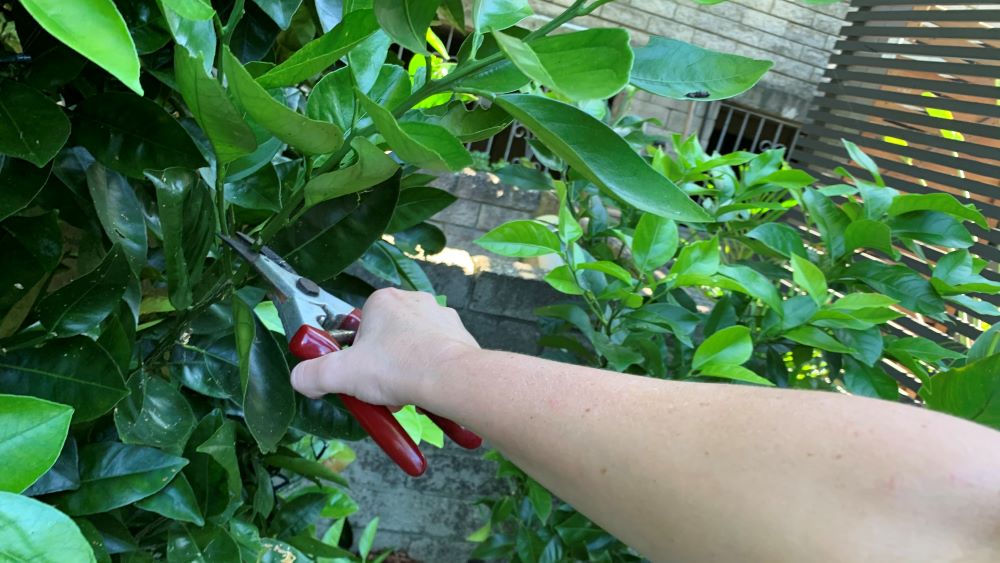Pruning an orange tree in fall is a great way to reshape the tree, remove excess new growth and tidy up any damaged leaves and branches. Oranges will have finished fruiting by the start of fall and will be ready to set new fruit during winter. Take the time to prune your tree to get it ready for the next harvest.
This article will explore the best way to prune your orange tree in fall to keep the tree to a size that makes it easy to harvest, to reduce the chance of pests and disease and to get more oranges.

How to prune an orange tree in fall – 7 Easy steps
Here are my easy steps to tidy up your orange tree in fall after it has finished growing oranges. This will help to reduce the chance of pests, disease and prepare your tree for the next major harvest.
1. Get clean secateurs ready
Use sharp, clean secateurs to make any cuts to the branches of your orange tree. Clean your secateurs with eucalyptus spray or alcohol disinfectant. Dry the blades and you are ready to trim. After pruning your orange tree, clean the secateurs again and wipe them with some vegetable oil or WD40 to prevent rust.
2. Check for new fruit

Check out the tree before you trim. Many oranges trees will be getting ready for their winter fruit. In Fall you may start to see small fruit appearing. Make sure you take care not to remove too many of these new fruit buds. They will turn into your next crop of oranges.
Some orange trees will produce hundreds of new fruit buds and will not be able to carry the fruit to full size. This is completely natural, and the excess fruit will drop before it matures. You can remove some of these buds in the pruning process without affecting your yield.
3. Reduce new stem growth

The first step is to reduce the length of long, new stems. For larger plants you can remove this down to 1/3 of the length. Oranges will sprout flowers from this new growth so don’t remove it all. Large, established trees like mine will add lots of new growth in fall so a lot needs to be removed.
For younger trees you can leave more of this new growth. If the tree looks out of shape, trim the branches back by 1/3. I like to trim my tree into a round shape to look neat in my front yard but you can also aim for a wineglass shape.
4. Remove damaged leaves

Take some time to look over your tree and remove damaged leaves. I like to trim these branches back to the next healthy leaf and remove any leaves that may have fungal growth, holes, bites from pests or have brown edges.
Removing old, damaged leaves will allow new leaves, flowers and fruit to get more sun. This will increase pollination rates giving you more fruit sooner. Fruit that is exposed to more sun will ripen quicker, turn a deeper orange and will taste sweeter.
5. Thin out branches

Take time in fall to thin out the branches on your large orange tree. This allows more air movement which reduces the risk of fungal disease and pest attack. I like to reach in and take a small branch at a time to open the tree up.
Remove any branches that are pointing down or are reaching the ground. Soil can splash on the leaves and disease from the soil can get to the plant.
6. Remove any stems that are below the graft
Check the main stem and remove any growth that is appearing from below the graft. Grafted orange trees will have a noticeable bump where the grafted top stem was joined to the roots. Any stems that appear below the graft from the root stock will no produce fruit and can have large spines.
Remove these by trimming them back as close as possible to the main stem. These stems can be added to your compost to break down or soak them in water for 2 weeks and make weed tea fertilizer.
7. Take a step back

After trimming your orange tree, take a few steps back and have a look at the shape. Look at it from all angles and make sure that it is well balanced. Keep each side the same and aim to reduce the height so you can easily reach the fruit.
My orange tree is out the front of my house so I like to keep it neat. It is a great screening tree and is growing next to a lemon and a lime tree. My orange tree is much older so quickly tries to take over the space. I remove the branches that are reaching out and getting in the way of my lemon and lime.
How to Prune an Orange Tree in Fall (Autumn) | Summary
Pruning orange trees in fall is a great task because the weather is still mild and it will set your tree up for a great winter harvest. I like to take the time to shape my tree because it will stay a similar size for the next few months. Take time to observe your tree first and make sure you do not remove too many new fruit buds.
Orange trees will grow vigorously if they are well cared for. I like to top dress orange trees in fall and spring with aged cow manure and compost. This will gently feed the roots and protect the roots over the warm and cold weather.
For more on this, check out my previous article here: How to top dress citrus trees | The Easy Way
Happy growing.
I am an accredited practicing dietitian, experienced gardener and a dedicated cook. I love writing and sharing my experience so you can learn from my successes and mistakes.
